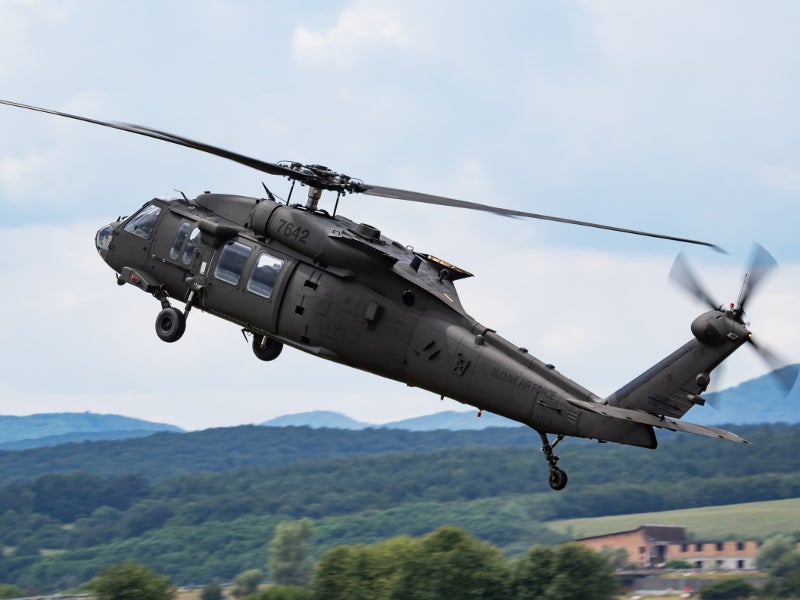UH 60 Helicopter Maintenance: A Comprehensive Guide for Pilots
Recognizing the Mechanics and Engineering Behind Uh 60 Helicopters
The UH-60 helicopter, typically recognized as the Black Hawk, stands as a pinnacle of contemporary rotorcraft innovation, symbolizing a mix of durable design and complex technicians. As we peel back the layers of the UH-60's layout, a globe of intricate systems and thorough engineering comes to light.
Background of UH-60 Helicopters
The background of UH-60 helicopters traces back to the late 1970s when the USA Army sought a versatile and advanced utility helicopter to change its aging fleet. In action to this demand, the Sikorsky Aircraft Company developed the UH-60 Black Hawk helicopter. Introduced in 1979, the UH-60 promptly came to be a staple in army operations because of its excellent capabilities.
The UH-60 was developed to master a variety of objectives, consisting of army transport, clinical evacuation, digital warfare, and unique operations. Its capacity to adapt to different functions made it a valuable asset to the U.S. uh 60. Military and other army forces all over the world
Throughout the years, the UH-60 system has undergone a number of upgrades and variations to improve its efficiency and keep rate with progressing mission demands. These helicopters have actually seen substantial solution in disputes such as the Gulf War, Afghanistan, and Iraq, showcasing their dependability and versatility in varied functional environments. The UH-60's abundant background is a testament to its long-lasting heritage as a leading energy helicopter.

Engine and Power Solutions
Using innovative propulsion technology, UH-60 helicopters are furnished with advanced engine and power systems to make sure ideal efficiency and dependability in a variety of operational circumstances. The UH-60, generally understood as the Black Hawk, is powered by two General Electric T700-GE-701D engines, each capable of supplying up to 1,940 shaft horsepower. These turboshaft engines offer the necessary drive for the helicopter to accomplish its missions effectively, consisting of army transport, medical discharge, and battle support.

Blades System and The Rules Of Aerodynamics
Just how do the rotor system and aerodynamics of UH-60 helicopters add to their operational efficiency and flight capabilities? The rotor system of the UH-60 helicopter plays an important function in offering lift and propulsion. The UH-60 features a four-bladed, fully articulated blades system that enables high ability to move and security during flight. This style allows the helicopter to perform a large range of goals, from transport and medical emptying to battle operations.
The rules of aerodynamics likewise here are the findings play a key duty in the performance of UH-60 helicopters. The streamlined fuselage and rotor blade style lower drag, allowing why not try this out the helicopter to achieve higher speeds and much better gas efficiency. The aerodynamic style of the UH-60 likewise adds to its ability to operate in diverse environmental problems, including high altitudes and warm temperatures.
Avionics and Flight Control Systems

In its detailed control with the blades system and aerodynamics of UH-60 helicopters, the avionics and flight control systems create a vital network of innovations shaping the aircraft's functional capacities. Avionics include the electronic systems used for interaction, navigating, and monitoring numerous airplane functions. In the UH-60, these systems consist of digital displays, interaction radios, general practitioner navigation, weather radar, and auto-pilot systems. These avionics systems supply crucial information to the pilots, boosting situational understanding and guaranteeing effective and safe operation of the helicopter.
The flight control systems of the UH-60 are in charge of translating the pilot's inputs right into the suitable changes to the rotor system, ensuring secure trip and maneuverability. These systems consist of hydraulic actuators, servos, and computer systems that collaborate to control the primary and tail blades, along with various other trip control surface areas. By precisely managing the helicopter's flight dynamics, these systems allow pilots to do a variety of objectives, from transportation and search-and-rescue to battle procedures, with accuracy and confidence.
Role and Applications in Aviation
Avionics systems in UH-60 helicopters include an array of electronic systems that help in navigation, communication, surveillance, and controlling numerous aircraft functions. These systems consist of digital read screens, auto-pilot systems, communication radios, General practitioner navigation tools, and weather condition radar. Additionally, these systems include safety attributes such as autopilot settings, terrain understanding warning systems, and stability enhancement systems to improve the total safety and functional capabilities of the UH-60 helicopters in various goals, consisting of troop transport, clinical discharge, search and rescue, and airborne firefighting.
Conclusion
In final thought, the UH-60 helicopter is a flexible aircraft with a rich history and advanced engineering. Its engine and power systems, rotor system, aerodynamics, avionics, and trip control systems all function with each other to make it a reliable and trusted equipment.
In its detailed control with the blades system and aerodynamics of UH-60 helicopters, the avionics and flight control systems form a vital network of innovations shaping the aircraft's operational capabilities.The trip control systems of the UH-60 are liable for translating the pilot's inputs right into the appropriate changes to the rotor system, making sure stable trip and maneuverability. Avionics systems in UH-60 helicopters incorporate a variety of electronic systems that help in navigation, interaction, tracking, and managing different airplane functions. Additionally, these systems incorporate security functions such as auto-pilot modes, terrain awareness advising systems, and stability augmentation systems to boost the total safety and operational capabilities of the UH-60 helicopters in various objectives, including army transport, medical emptying, search and rescue, and aerial firefighting.
Its engine and power systems, blades system, aerodynamics, avionics, and trip control systems all work with each other to make it a efficient and trusted maker.